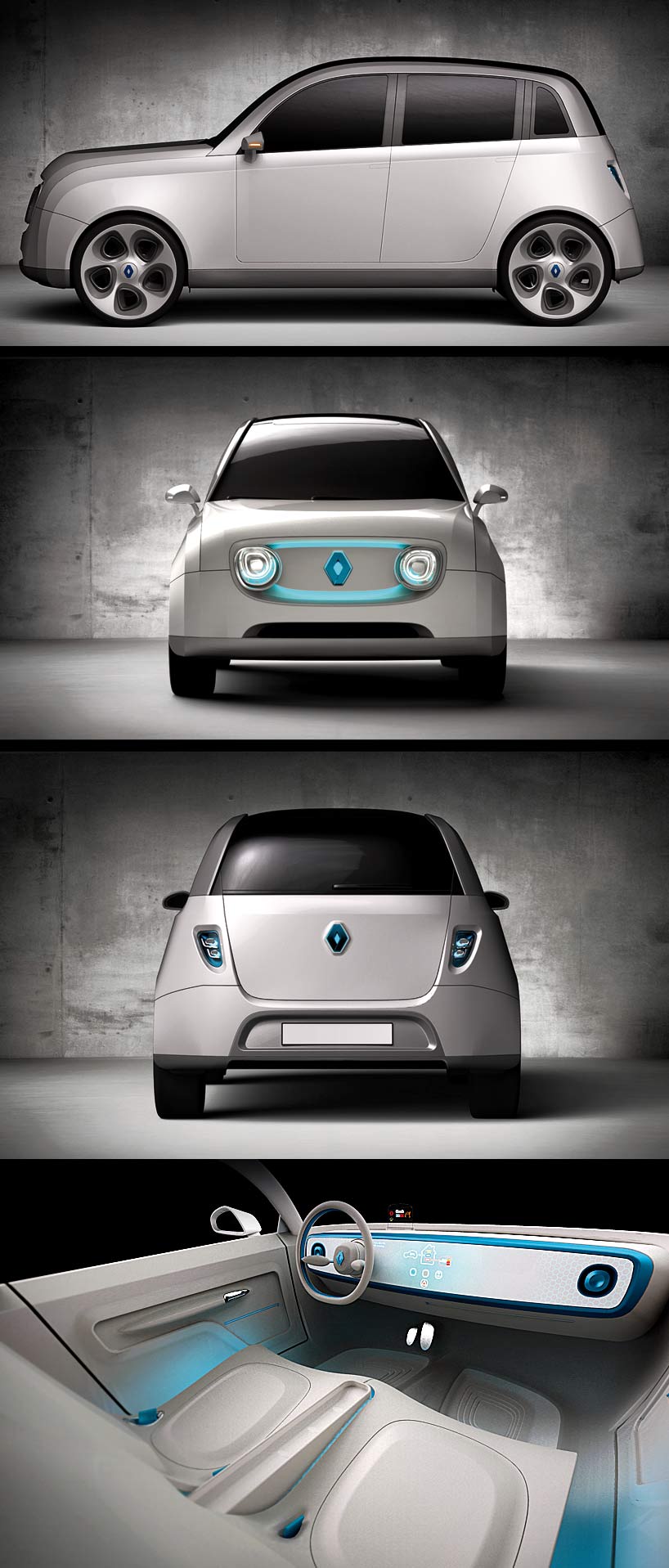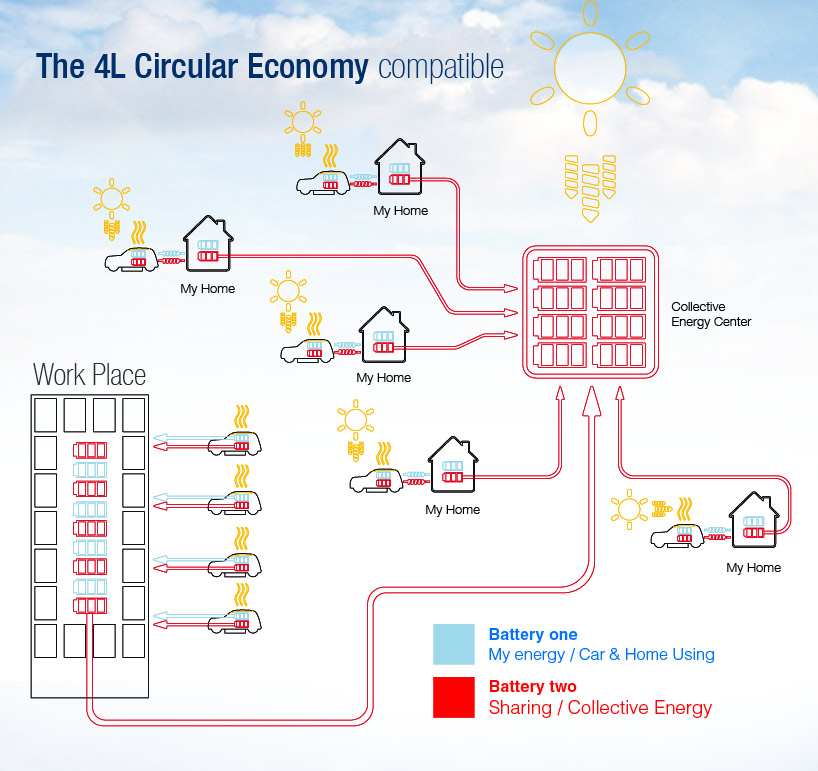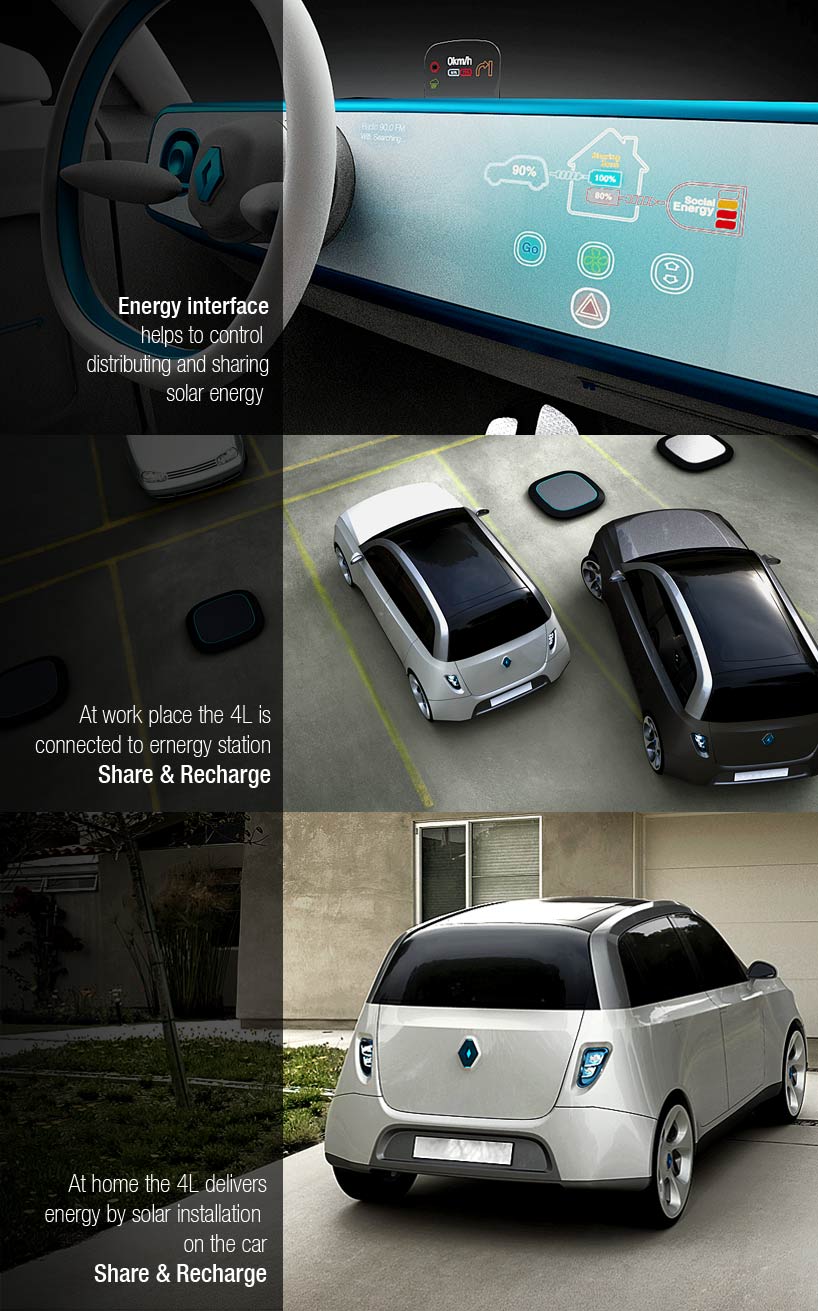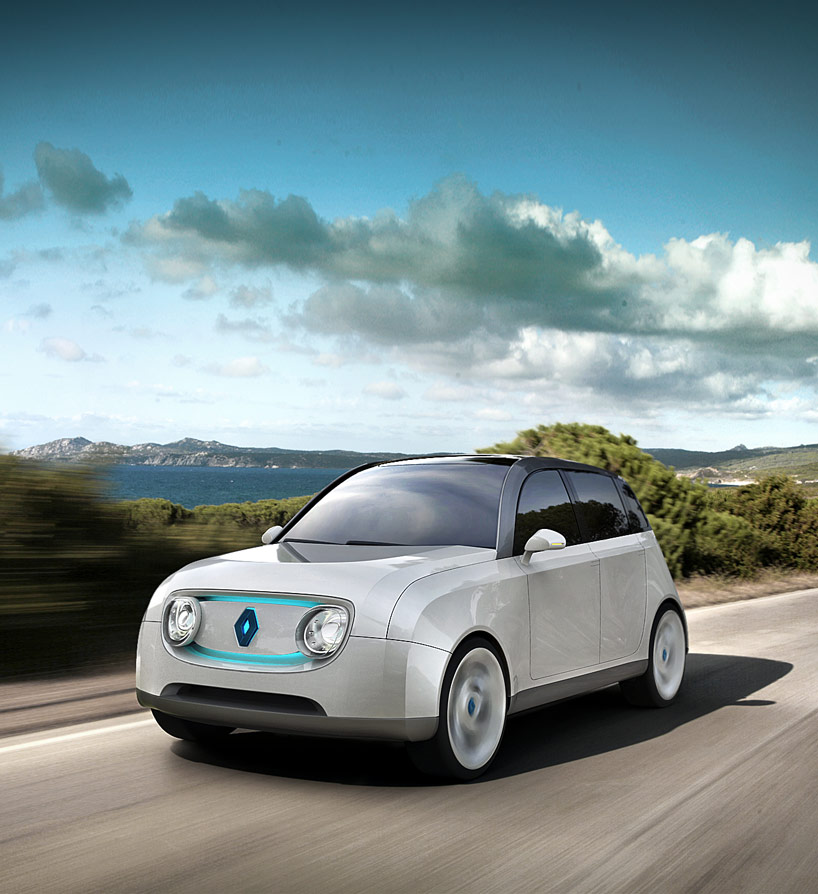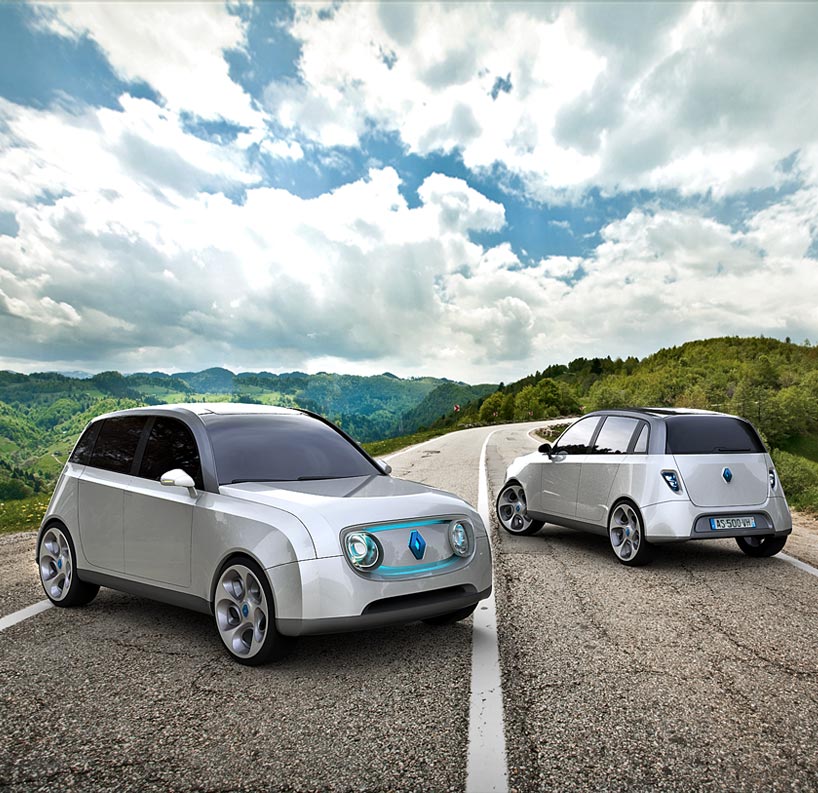
Renault 4Lectric by nghiem charlie from france
designer's own words:
The New 4L /// Circular economy compatible
In the foreseeable future we will apply the circular economy as the mode of operation which is based on nature and which produces no waste.
In order to establish progressively this mode of operation and of life, the problem which we have to face is how to democratize the economy. The aim is to make our consumption circular while giving to the users the instruments to achieve this change gradually.
The circular economy should be applied to all of our actions; every action has a consequence on the environment and we are obliged to limit them. Mobility is one problem among others that we have to resolve, as it is the common ground of many human activities and therefore it is social.
The simplicity of the Renault 4L could respond to this change because in the past at the very beginning, this vehicle helped users to achieve a functional tool and mobility at a reasonable price. This democratization has allowed people to be independent and to go on holiday for instance.
The design of the new 4L should be an extension of this work. Accessible, reasonable and responsible in its production process, utilisation and end of life.
Housing and transportation are the largest spending of households. The tool of mobility can be a first step towards the democratization of a circular economy, if we give to the vehicle much more responsibility than its function of driving. The will of my concept is part of a global approach where the car would be one of the ways out among others to create this new economy. The 4L is the first solution for households which cannot invest currently in renewable energy, to give them the opportunity by acquiring the vehicle which helps them to participate at the autonomy of energy.
Manufacturing:
The idea would be to build a car which uses the least possible resource in material and energy. This should make the car lighter, by concentrating on the essential but not with the minimum. The design should be simple, clear, legible and functional. The assembly must be environmentally friendly. Assemble the car with fewer parts, making a design synthesizing several functions, combining the details under one drawing.
In addition to using recycled or recyclable materials to build our transportation we should involve local producers to create some elements, tissues, gum etc..
We should not produce in quantity "unlimited" but produce a reasonable quantity in order to upgrade technologically our product in perpetuity.
Utilisation:
The concept of our Renault 4L electric includes two batteries as also solar films on the windows and solar on the roof. The body could also receive energy with thermal sensors.
The first battery would be reserved for own use in the car. While driving it could accumulate energy beyond recovery during braking.
When the user goes to the charging station he will charge just one part of the energy at the electric station, the rest has been already provided by the power that he has accumulated during his ride.
But once attached to the house it will also serve as a tool to recover capital energy through his car and to couple it with domestic use. This scenario would be as valuable for users who go to work where the car would feed some of their energy consumption.
The parked car is no longer passive but becomes active participant throughout his life to make the user independent of energy.
The second battery, the so-called "social battery" is also powered by the sun and would be dedicated to a collective action. I think the circular economy begins with sharing and especially with sharing of energy.
This second battery accumulates the electricity that would be redirected to a storage center.
The stock of energy provided by the users would serve at the manufacture and the recycle of the vehicle at its end of life, but would also give its users the opportunity to participate in collective works. For example to abet such as housing, schools and cities, to help them to get independent of energy. The "social power and participatory" could also be used to help countries or geographical areas where the access of electricity is difficult.
This type of operation is in circular motion, energy is no longer used in one direction, but rather it is redistributed to a collective work.
End of life / rebirth:
Once reached the end of life the energy which was redistributed throughout his lifetime would then help to "recycle" and also to revive the car in another form. The manufacturer would retake the car to supervise more effectively the future of each vehicle.
His role is no more that of a linear industrialist, but an industrial that is socially involved in the creations of new values beyond the automobile and becomes the creator of a new philosophy of life that respects nature.
